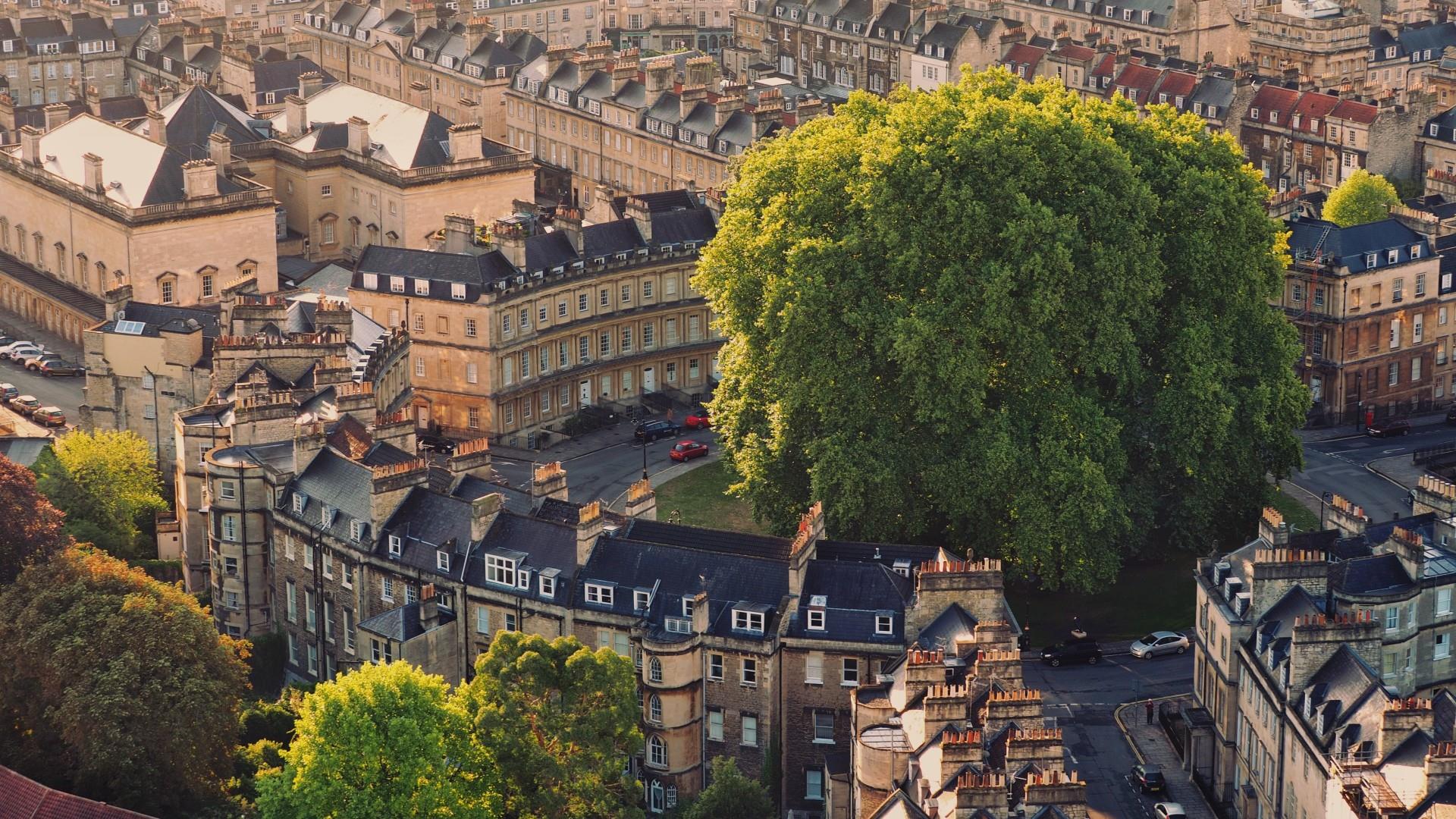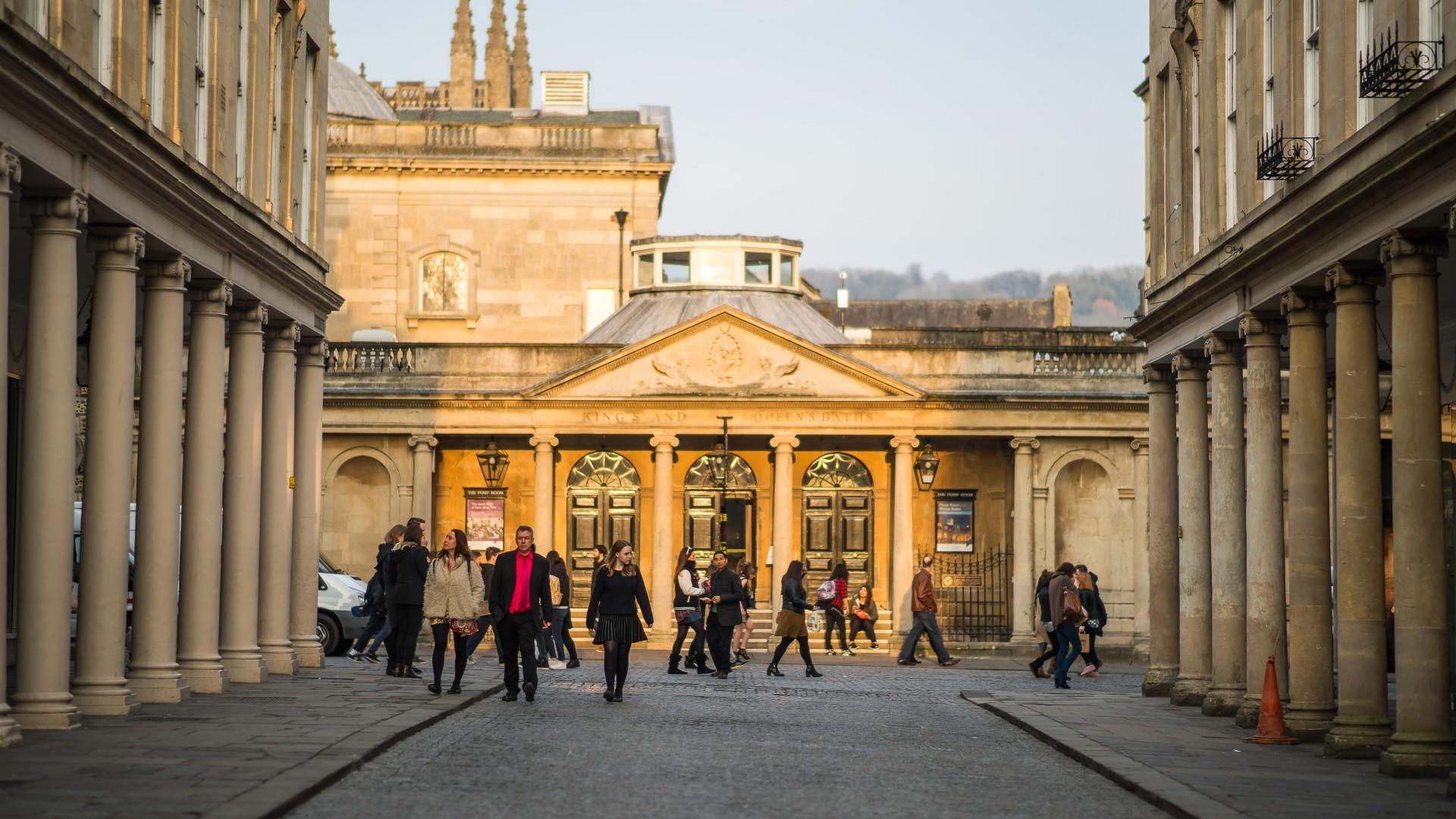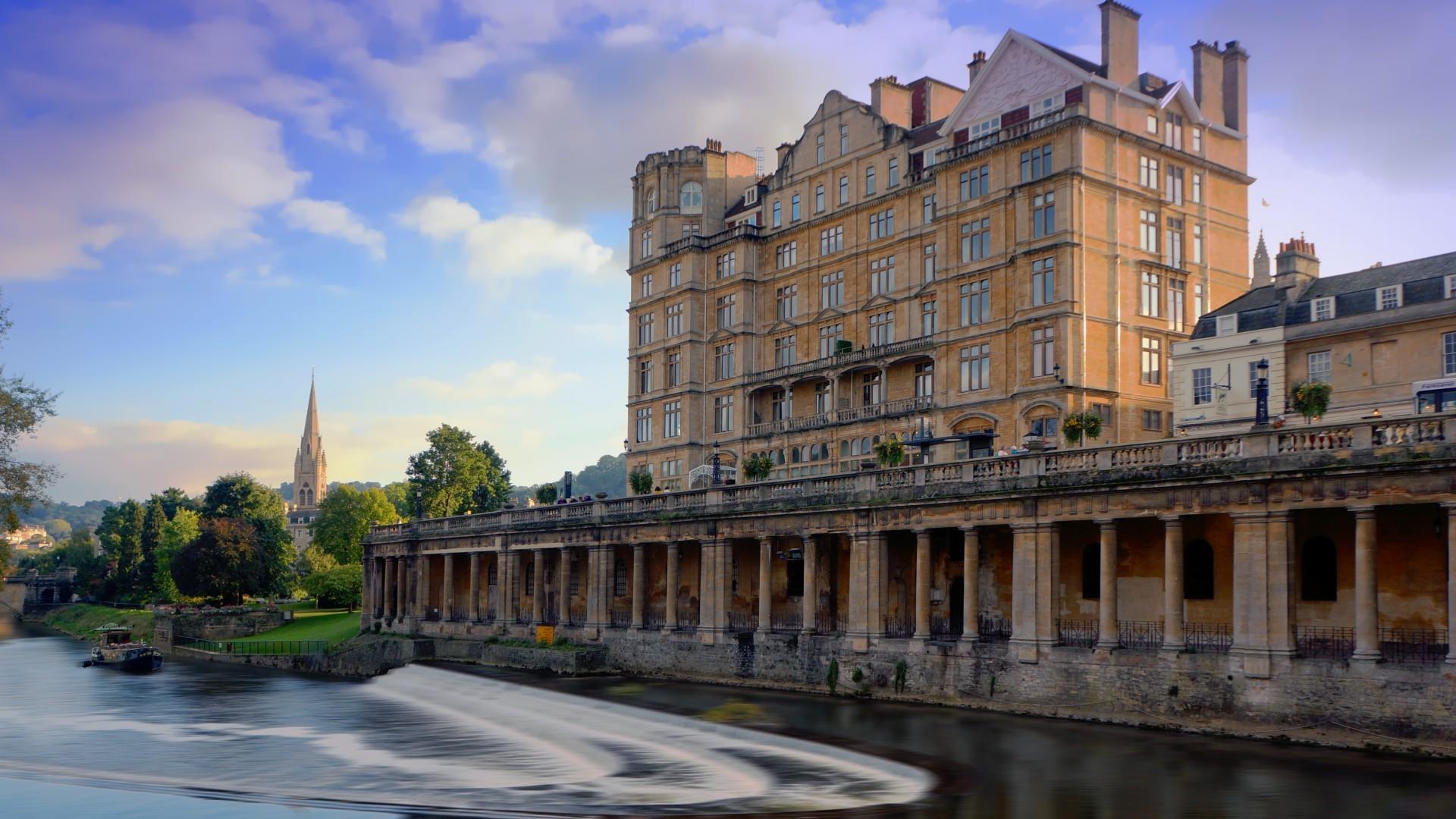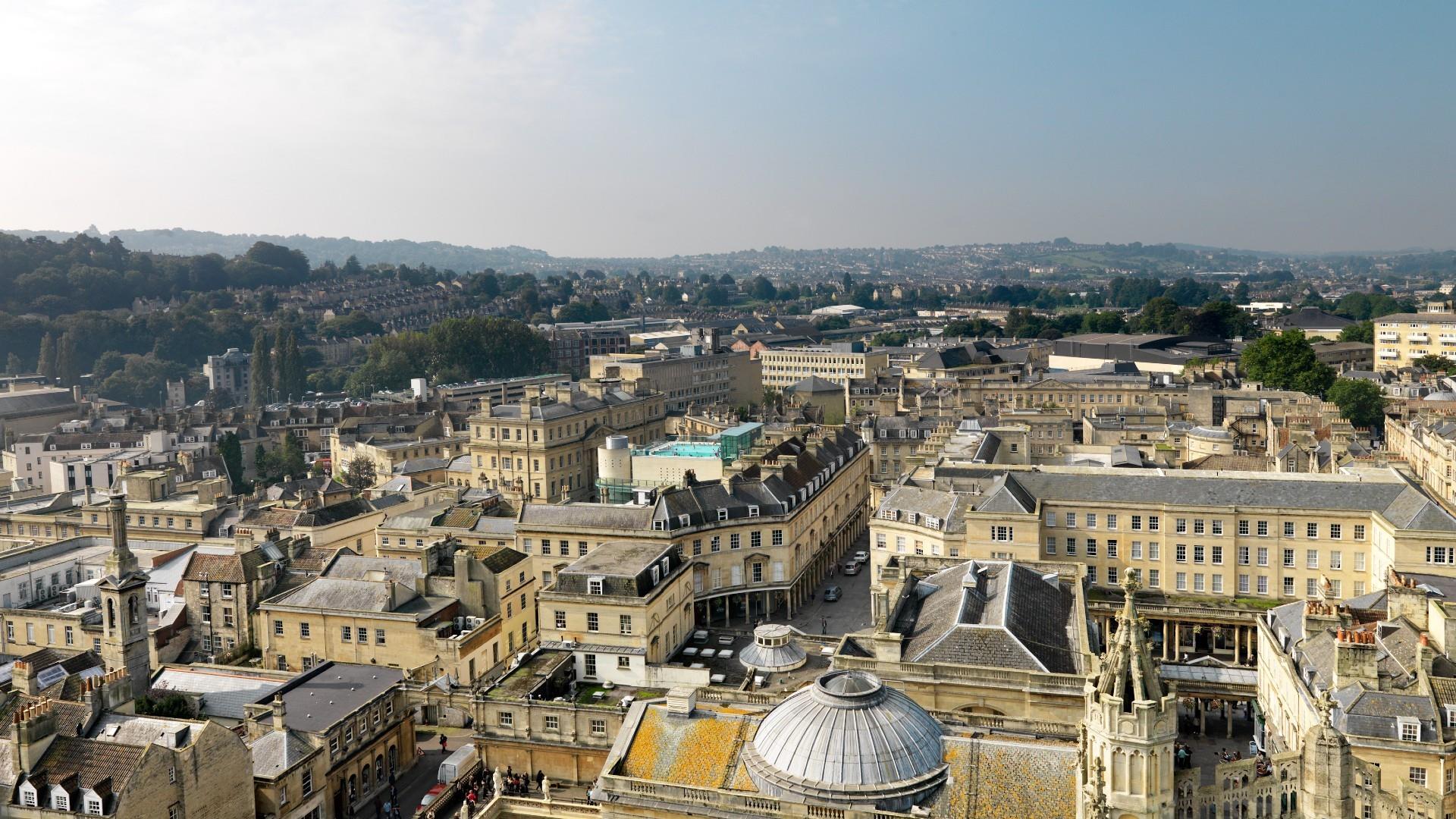Bath’s iconic architecture is one of the many reasons why the city is a designated UNESCO World Heritage Site, from its Roman origins to the fashionable eighteenth-century designs that form many of the city’s most recognisable buildings.
Roman Bath
Bath’s Roman origins are a key part of the city’s architectural history. In AD 43, the Romans started the development of ‘Aquae Sulis’ as a sanctuary of rest and relaxation, not a garrison town like most Roman settlements. In AD 70, a reservoir around the hot springs was built, followed by a sophisticated series of baths and a temple dedicated to the goddess Sulis Minerva. A temple to Aesculopius, discovered near the Cross Bath, provides a clue to there being a bath dedicated to healing, not just to relaxation. As a religious shrine and bathing complex, Aquae Sulis attracted visitors from across Britain and Europe, foreshadowing Bath's status as a premier tourism destination.
Today, the Roman Baths is one of the best-preserved Roman remains in the world, where 1,170,000 litres of steaming spring water, reaching 46°C, still fills the bathing site every single day.
Eighteenth-Century Architecture
It was the Georgian period that completely transformed Bath’s society, architecture and history, helping to make it the beautiful and iconic place that it is today – we have a lot to thank them for! Did you know that Bath has a staggering 5,000 listed buildings and offers the most impressive Georgian architecture in the country?
During the eighteenth century, three ambitious local entrepreneurs set out to make Bath one of the most beautiful cities in Europe. A former mayor of Bath, Ralph Allen, created the beautiful and intimate Prior Park Landscape Garden, Richard ‘Beau’ Nash played a leading role in making Bath the most fashionable resort in eighteenth century England, and John Wood the Elder designed many streets and iconic buildings, such as the Circus and Queen Square. His son, John Wood the Younger, followed in his footsteps and created the Assembly Rooms and the Royal Crescent.
The Royal Crescent is one of the most famous architectural triumphs in Bath, comprising of 30 houses laid out in a crescent shape. Built between 1767 and 1774, it is among the greatest examples of Georgian architecture in the world. If you want to experience an authentic taste of Royal Crescent life today, book into The Royal Crescent Hotel & Spa and enjoy the luxurious bedrooms, opulent facilities, beautiful gardens, fine dining restaurant and relaxing spa – or just drop by for an elegant afternoon tea!
To experience Royal Crescent life in its original style, No.1 Royal Crescent, the first house to be built on the crescent, is open to the public as a museum maintained by the Bath Preservation Trust. The house illustrates how wealthy property owners of the eighteenth century might have furnished such a wonderful home. Prepare to encounter many surprises as friendly, knowledgeable guides positioned in each room of the house reveal the secret history of the house and its former residents and guests.
Bath Stone
Bath Stone is an oolitic limestone. Originally obtained from the Combe Down and Bathampton Down Mines under Combe Down, Bath. Its warm, honey colouring gives the buildings of Bath their distinctive appearance. Visit the Museum of Bath Stone to find out more.

 Royal Crescent (c) Lloyd Evans Photography
Royal Crescent (c) Lloyd Evans Photography Bath Street and Roman Baths
Bath Street and Roman Baths Putleney Weir credit Quentin Robertson
Putleney Weir credit Quentin Robertson Bath Skyline
Bath Skyline





